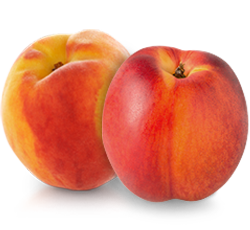peach News
Sustainable food production at the core of Ontario’s tender fruit orchards
September 12, 2022
By Lilian Schaer
The changing climate and a growing desire for a more sustainable world are top of mind with the public and governments around the world. Consumers are changing their habits and businesses and industries are modifying their practices in response – but for Ontario’s tender fruit growers, sustainability and environmental stewardship are par for the course on the farm.
The province’s growers of peaches, nectarines, cherries, apricots, plums and pears have long been adapting new and better ways to produce fruit in their orchards, which are largely located in the Niagara region and along the shores of Lake Erie.
That means using smart sprayers that only spray where the tree leaves are and vision systems that can help predict how much fruit will be ready for harvest at what time – but also using soil maps, growing cover crops, and planting trees closer together so the same amount of land can sustainably produce more fruit.
“The new generation of farm stewards are using technology and their iPads, cell phones and online educational sessions from all corners of the globe to continually learn and be better growers,” says fruit grower Brian Rideout who farms on the shores of Lake Erie. “It’s a whole-system approach that will keep our farms sustainable. The agro-ecosystem to me is air, soil and water quality and if we can protect that ecosystem in our orchards and on our farms, the longer those farms will be there.”
That’s particularly important to Rideout, whose children are the fifth generation on the family’s farm in Chatham-Kent. Peaches, nectarines and pears are among their major crops, but the farm also grows cherries, strawberries, tomatoes, melons, squash and apples.
Planting trees more closely together has been – and continues to be – a big change in Ontario fruit orchards. On Rideout’s farm, for example, new trees are planted in a high-density system of 700 to 900 trees on one acre of land, where they used to plant 300. The trees are narrow and tall, making it easier and safer to prune, thin, and harvest.
New fruit varieties are bred to be more disease resistant, which means growers don’t have to spray trees as often to protect the crop. At the same time, new smart sprayers use imaging systems to precisely target spray and apply it only where needed, reducing both spray use and waste.
Rideout’s farm is also one of many Ontario orchards that uses a system called Integrated Pest Management that uses natural products and predators to control pests.
Fifteen years ago, he recalls, the farm sprayed the peach and nectarine orchard every spring to control a pest called Oriental Fruit Moth, which damages both trees and fruit. Then he discovered a natural Oriental Fruit Moth female pheromone product that, when sprayed in the orchard, disrupts the pest’s mating cycle. Today, thanks to research and innovation, the pheromone is automatically released from small plastic tubes that simply hang in the orchard.
“I can’t find Oriental Fruit Moth in the orchard anymore and we don’t see damage anymore,” Rideout says.
Using pheromones results in less tractor and sprayer usage, reducing environmental impacts on both counts, he adds.
After spring pruning, workers used to burn all the removed branches. Today, a flail mower mulches the tree limbs into a compost that enriches the soil in the orchards. In only 15 years, organic matter content, which is what helps make the soil fertile and able to absorb and retain water, has risen from 2% to up to 10% in some areas of the farm.
Growers like Rideout are also experimenting with growing a cover crop under and between trees in the orchard. Cover crops help reduce the amount of fertilizer and water trees need, as well as naturally controlling weeds and providing pollinator habitats.
Soil mapping is another sustainability tool fruit growers are starting to use more frequently. Mapping the soil before planting new trees in the orchard identifies the soil’s profile and composition, which means growers can select the best rootstock for the soil conditions, resulting in healthy, uniform trees that grow well.
“Happy soil means happy trees, which results in better, higher quality fruit for consumers,” says Rideout. “As growers, we’re constantly adapting new technology and figuring out how we can best use it on our farms so we can do a better job of growing food both now and in the future.”
For more information on sustainability and stewardship on Ontario’s tender fruit farms, visit www.ontariotenderfruit.ca.
-30-
Other News Stories
OCTOBER 10, 2024
Ontario’s Tree Fruit Growers’ Partnership with the Province to Bear Good Fruit [read more]
SEPTEMBER 12, 2022
Sustainable food production at the core of Ontario’s tender fruit orchards [read more]
JULY 11, 2022
Let Ontario’s fruit dazzle you with flavour and freshness this year! [read more]
APRIL 27, 2022
Making local tree fruit a number one choice for Ontario consumers [read more]
SEPTEMBER 23, 2021
85,000 New Trees and Vines Will Strengthen the Resilience of Niagara’s Tender Fruit Sector [read more]
AUGUST 17, 2020
Ontario eyes variety development for future grapes [read more]
MAY 24, 2016
Growers plant new varieties with investment from Greenbelt Foundation [read more]
OCTOBER 14, 2015
Pilot Project To Plant 130,000 Tender Fruit Trees In Niagara [read more]
MAY 15, 2015
The bloom is back and a little early [read more]
APRIL 01, 2015
Fruit Tracker | Fruit and Vegetable Magazine Article [read more]
JUNE 26, 2014
Local Food Week Was a Great Succes [read more]





